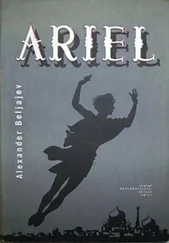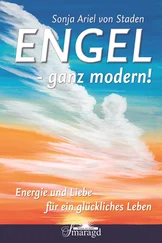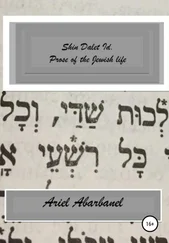Ariel Toaff - Blood Passover
Здесь есть возможность читать онлайн «Ariel Toaff - Blood Passover» весь текст электронной книги совершенно бесплатно (целиком полную версию без сокращений). В некоторых случаях можно слушать аудио, скачать через торрент в формате fb2 и присутствует краткое содержание. Жанр: Религиоведение, на английском языке. Описание произведения, (предисловие) а так же отзывы посетителей доступны на портале библиотеки ЛибКат.
- Название:Blood Passover
- Автор:
- Жанр:
- Год:неизвестен
- ISBN:нет данных
- Рейтинг книги:3 / 5. Голосов: 1
-
Избранное:Добавить в избранное
- Отзывы:
-
Ваша оценка:
- 60
- 1
- 2
- 3
- 4
- 5
Blood Passover: краткое содержание, описание и аннотация
Предлагаем к чтению аннотацию, описание, краткое содержание или предисловие (зависит от того, что написал сам автор книги «Blood Passover»). Если вы не нашли необходимую информацию о книге — напишите в комментариях, мы постараемся отыскать её.
Blood Passover — читать онлайн бесплатно полную книгу (весь текст) целиком
Ниже представлен текст книги, разбитый по страницам. Система сохранения места последней прочитанной страницы, позволяет с удобством читать онлайн бесплатно книгу «Blood Passover», без необходимости каждый раз заново искать на чём Вы остановились. Поставьте закладку, и сможете в любой момент перейти на страницу, на которой закончили чтение.
Интервал:
Закладка:
274
In this regard, see A. Antoniazzi Villa, Fonti notarili per la storia degli ebrei nei domini sforzechi , in "Libri e documenti", VII (1981), no. 3, p. 1-11; Ead., Appunti sulla polemica antiebraica nel Ducato Sforzesco , in "Studi di Storia Medioevale e Diplomatica", VII (1983), pp. 119-128; Ead., Gli ebrei nel milanese dal Medioevo all'espulsione , in F. Della Peruta, Storia illustrata di Milano , Milan, 1989, pp. 941-959.
275
Cfr. Simonsohn, The Jews in the Duchy of Milan , cit., vol. I, pp. 436-437, no. 1019.
276
Fra Antonio da Cremona claimed that he put an end to the "toleratam habitationem perfide et scellerate progenei ebrayce, que ultra id quod semper pertinax fuit et est in opbrobrium christiane, legis, semper etiam in suis officiis et orationibus in hoc perfide est obiecta christiane legi, quam ipsam cum operibus eius quotidie et incessantur blasfemat" (cfr. Segre, The Jews in Piedmont , cit., vol. I, p. 330-331).
277
The trial testimonies have been studied and published by A. Antoniazzi Villa, Un processo contro gli ebrei nella Milano del 1488 , Milan, 1986.
278
Fragments of Mendele Oldendorf of Regensburg’s autobiography have been published by E. Kupfer, in "Di goldene keyt. Periodical for Literature and Social Problems", 58 (1967) pp. 212-223 (in Yiddish). He has stressed its importance as a source for the history of the Jews at Venice and in the Ashkanazi communities of northern Italy in the last part of the Fifteenth century, D. Nissim, Un "minian" de ebrei ashkenaziti a Venezia negli anni 1465-1480 , in "Italia", XVI, 2004, p. 45.
279
In the trial documents, Jacob is referred to as "Jacob ebreus de Papia, filius quondam Manni, habitator in civitate Papie". (Cfr. Antoniazzi Villa, Un processo contro gli ebrei nella Milan del 1488 , cit., pp. 90-92.
280
"Si faciunt aliquam ymaginem ad symilitudinem Iesus Christi et Virginis Marie et ipsam ymaginam proyciunt in igne vel in aliquo, vel ponunt sub pedibus, vel alidquid faceunt in contemptum" (cfr. Ibidem, p. 86; "[...] et ipsam ymaginem proyciunt in igne, vel stercore vel sub pedibus" [“Whether they make images in the likeness of Jesus Christ and the Virgin Mary and those these images in the fire or elsewhere, or stamp them underfoot, or otherwise hold them in contempt”] (cfr. Ibidem, p. 88).
281
"(Judaei} panes azymos seu mazoctos secundum ritum eorum legis confecisse ad instar tamen gloriossimi cruxifficii et eius vilipendium [...] quia fecerunt quatuor imagines de pasta ad imaginem domini nostri Jehesus Christi in obproprium Christi et fidei catholice, comburendo ipsas imagines infra quendam furnam" (cfr. Segre, The Jews in Piedmont, cit., vol. I, pp. 146-147, nos. 326-327). For documentation on other cases in which, in the Middle Ages, the Jews were accused of making, on the eve of the Passover, leavened bread with the image of the crucicifed Christ, and then causing them to be consumed in the heat of the furnace, see D. Nirenberg, Communities of Violence. Persecution of Minorities in the Middle Ages , Princeton (N.J.), 1996, p. 220.
282
"Si (hebrei) capiunt aliquem christianum et aliquid de ipso in comtemptum fidei christiane faciunt" (cfr. Antoniazzi Villa, Un processo contro gli ebrei nella Milano del 1488 , cit.. p. 86).
283
"Accipiunt dictum sanguinem dictorum puerorum Christianorum et illu redigunt in pulverem, quem pulverem ipsi Iudei servant et postea, quando circumciserunt eorum filios, ponunt de sanguine pueri Christiani super preputiis circuncisourm [...] et si non possunt habere de sanguine pueri Christiani quando circumcisorum, ponunt de bolo Armeno et de sanguine draconis, et dicit quod dictus pulvis mirabiliter consolidat vulnera et restringit sanguinem" [“They take the blood of Christian boys and reduce it to powder, which powder these Jews use themselves, and later, when they circumcise their sons, they place the blood of Christian boys on the foreskin of the circumcised child […] and if they cannot obtain the blood of Christian boys they circumcise, they use Bolo of Armenia and Dragon’s Blood, and say that the said power miraculously heals the wound and clots the flow of blood”] T. Deposition of Angelo da Verona to the Trent judges on 8 April 1475. Cfr. A. Eposito and D. Quaglioni, Processi contro gli ebrei di Trento, 1475-1478 ; I: I processi del 1475 , Padua, 1990, p. 288. On the Jewish custom of applying astringent powders such as dragon's blood on the circumcision wound, see J. Trachtenberg, The Devil and the Jews , Philadelphia (Pa.), 1961, pp. 150-151.
284
"Magister Ioseph, qui habitat Ripe et qui circumcidit filios ipsius Angeli, tenet de sanguine predicto, quod postea utitur quando circumcidit" [“Master Joseph, a resident of Riva, who circumcised Angelo’s sons, obtained blood, and then used it when he circumcised”] (cfr. Esposito and Quaglioni, Processi, vol. I, cit, p. 288). "Magister Iosephus phisicuc", known as the "zudio gobo" [hunchbacked Jew], the circumcisor of the sons of the Angelo da Verona, appears to have been active at Riva del Garda, together with his son Salomone, at least until the end of 1496 (cfr. M.L. Crosina, La communità ebraica di Riva del Garda , sec. XV-XVIII, Riva del Garda, 1991, pp. 29, 33, 42-43).
285
'Thobias [...] dicit quod (judei) accipunt sanguinem pueri Christiani et illum faciunt coagulare et deinde illum essiccant et de eo faciunt pulverem" [“Tobias [...] said that (the Jews) take the blood of a Christian boy and cause it to coagulate and then they dry it and make a powder of it”] (cfr. Esposito and Quaglioni, Processi , vol. I, cit. p. 318).
286
"Pro ut Thobias inter alias confessus est, (pueros suos circumcisos) cum pulveribus dicti sanguinis coagulati medentur et statim altero vel tertio die santitatem recipiunt" ([Benedetto Bonelli], Dissertazione apologetica sul martirio del beato Simone da Trento nell'anno MCCCCLVXXV dagli ebrei ucciso , Trent, Gianbattista Parone, 1747, p. 113).
287
Cfr. K. von Amira, Das Endinger Judenspiel , Halle, 1883, pp. 95-97; R. Po-Chia Hsia, The Myth of Ritual Murder. Jews and Magic in Reformation Germany , New Haven (Conn.)-London, 1988, pp. 20-21
288
Cfr. Po-Chia Hsia, The Myth of Ritual Murder , cit., p. 29.
289
Anton Bonfin, in Rerum Hungaricuarum Decades , by K.A. Bel, dec. V.I. 4, 1771, p. 728.
290
On this matter, see recently P. Billar, View of Jews from Paris around 1300. Christian or Scientific ?, in D. Wood, Christianiy and Judaism, Oxford, p. 199; I.M. Resnick, On Roots of the Myth of Jewish Male Menses in Jacques de Vitry's History of Jerusalem , in "International Rennert Guest Lecture Series", III (1996), pp. 1-27. See moreover Trachtenberg, The Devil and the Jews , cit., pp. 50, 148.
291
"Audivi a Judeis [...] quod omnes Judei, qui de eorum processerunt, singulis mensibus sanguine fluunt et dissenterium sepius patiantur et ea ut frequentius moriuntur. Sanatur autem per sanguinem hominis Christiani, qui nomine Christi baptizatus est" ( Historiae Memorabiles , by E. Kleinschmidt, Cologne, 1974, p. 65).
292
On the multiple uses of the blood, fresh or dried, human or animal, in the popular Christian pharmacopaeia of the Middle Ages until the early modern era, see the classic study by H.L. Strack, The Jew and Human Sacrifice. Human Blood and Jewish Ritual , London, 1909, pp. 43-88.
Читать дальшеИнтервал:
Закладка:
Похожие книги на «Blood Passover»
Представляем Вашему вниманию похожие книги на «Blood Passover» списком для выбора. Мы отобрали схожую по названию и смыслу литературу в надежде предоставить читателям больше вариантов отыскать новые, интересные, ещё непрочитанные произведения.
Обсуждение, отзывы о книге «Blood Passover» и просто собственные мнения читателей. Оставьте ваши комментарии, напишите, что Вы думаете о произведении, его смысле или главных героях. Укажите что конкретно понравилось, а что нет, и почему Вы так считаете.












